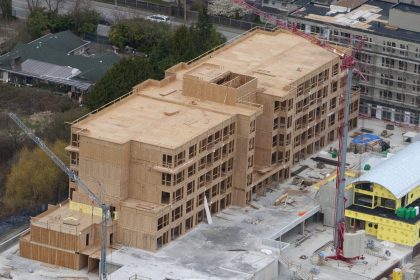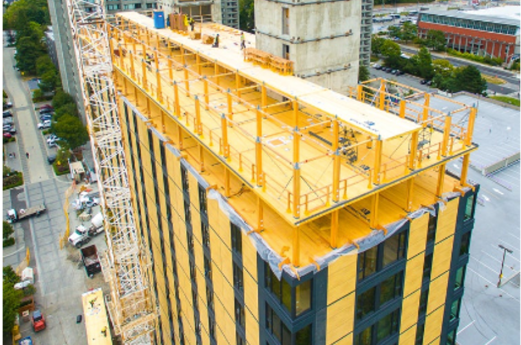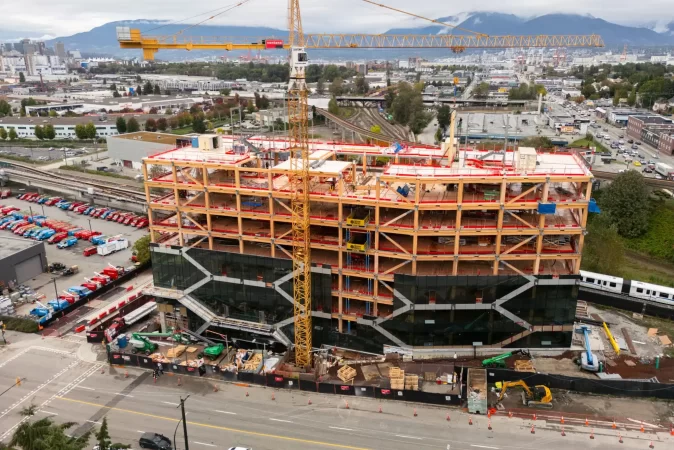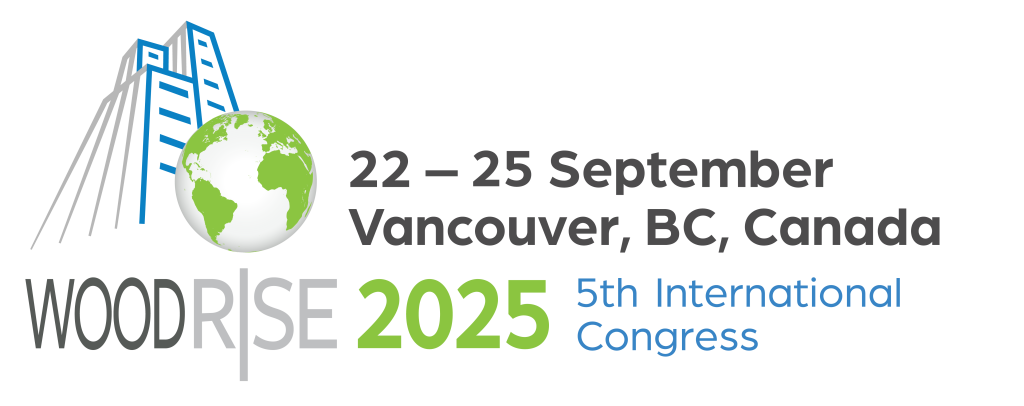Woodrise 2025
ABOUT WOODRISE 2025
Canada's Building and Forest Products Sector
Canada: Diverse Forests & Culture of Wood
Canada is home to some of the largest and most diverse forests in the world. With over one-third of the country covered in trees and a long history of managing our forests, Canadians strongly believe in building with wood.
Light-frame wood and, increasingly, mass timber construction are used to build communities across Canada. Wood structures are everywhere, from single and multi-family homes to gathering spaces, healthcare, schools, and office buildings.
British Columbia: Forest-to-Frame
With advances in wood building systems, such as mass timber components, hybrid timber construction and mass timber systems, Canada is a leader in building taller with wood.
In Canada’s most western province, British Columbia (B.C.), where major cities are confined by ocean or lake and mountains, there is no choice but to build taller.
In the late 2000s, B.C. led North America by increasing the height from four to six storeys for light-frame wood building systems for residential construction. Developers quickly realized this wood-based system was the solution to providing reasonably priced and energy-efficient housing in the mid-rise market.
Remy in Richmond, B.C. was the first six-storey light-wood frame building to receive a building permit under the revised BC Building Code.

Matthew Bolt Photography, courtesy naturallywood.com
B.C.'s 5-6 storey segment saw a 12x square footage increase from 2008 (700 K) to 2022 (8.6 M).
Canada: Diverse Forests & Culture of Wood
Canada: Diverse Forests & Culture of Wood
Canada is home to some of the largest and most diverse forests in the world. With over one-third of the country covered in trees and a long history of managing our forests, Canadians strongly believe in building with wood. Light-frame wood and, increasingly, mass timber construction are used to build communities across Canada. Wood structures are everywhere, from single and multi-family homes to gathering spaces, healthcare, schools, and office buildings.
Using globally agreed, science-based criteria and indicators, the provinces and territories of Canada continually evolve their forest management practices to address climate change, ecological resilience, and forest health. Unlike most forests around the world, 92% of Canada’s forests are publicly owned — 90% by the provincial and territory governments and two per cent by the federal government. The remainder is held by some 450,000 private landowners.
Integrating Indigenous and local values and knowledge into forest management and conservation, Canada strengthens the resiliency and health of its forests and communities.
Canada’s forest industry includes solid wood products manufacturing, including primary (such as softwood lumber and structural panels) and secondary (such as engineered wood products, mass timber and millwork), as well as pulp & paper. All are used domestically and are exported.
Canada has
9%
of the world’s forests
41%
of the world’s certified forests
In 2020, The University of British Columbia conducted a study comparing British Columbia (B.C.) and Canada to seven other countries participating in the Montréal Process Criteria and Indicators. The peer-reviewed study found B.C. and Canada’s forest management and conservation approaches, including legal frameworks, management plans, forest inventories and community involvement are some of the most advanced in the world.

Photo credit: Moresby Creative

Photo credit: Candace Kenyon

Photo credit: Moresby Creative. Courtesy naturallywood.com
British Columbia: Building up
In Canada’s most western province, B.C., wood has been used for building homes and other structures for thousands of years. First Nations structures ranged from conical pit houses in the B.C. interior to coastal longhouses constructed using posts and beams. These traditional designs continue to inspire modern architecture.



Tsleil-Waututh Administration & Health Centre, a hub for the Nations’ administration, governance, health and social services
Where major B.C. cities are confined by ocean, lakes, mountains and national borders, there is no choice but to build taller.
2008: B.C. led North America by increasing the height from four to six storeys for light-frame wood building systems for residential construction. Developers quickly realized this wood-based system was the solution to providing reasonably priced and energy-efficient housing in the mid-rise market. B.C.’s 5-6 storey segment saw a 12x increase from 2008 to 2022.
Remy (right) in Richmond, B.C. was the first six-storey light-wood frame building to receive a building permit under the revised BC Building Code.

Photo credit: Stephanie Tracey, courtesy naturallywood.com

2017: Brock Commons Tallwood House, (left) an 18-storey mass-timber hybrid student residence at The University of British Columbia, was completed. It was the tallest mass-timber hybrid building in the world at the time of completion.
Photo credit: KK Law, Courtesy naturallywood.com
2020: With examples at home and worldwide demonstrating repeatable, reliable and safe mass timber and high-rise construction, Canada incorporated encapsulated mass timber construction into its 2020 National Building code up to 12 storeys.
The Hive (right) is a 10-storey, mixed-use building that uses innovative timber brace framing to withstand the effects of earthquakes in a tall building application. The design combines commercial space with social spaces such as childcare and wellness areas.
2024: B.C. updated its provincial building and fire codes to enable more mass timber construction across public and private projects. The new codes now allow for heights of up to 18 storeys, more eligible building types (schools, care homes, retail, industrial facilities), and more exposed wood surfaces.

Photo credit: KK Law, Courtesy naturallywood.com
With almost 470 architects, engineers and constructors working with over hundreds of locally-available wood products, B.C. is one of North America’s leaders in innovative, environmentally-friendly wood design and building solutions.
Since 2007, over 860 mass timber buildings have been built in Canada, 450 of them in B.C.
The province is home to some of the world’s top mass timber architects, engineers, designers, and project managers—many of whom have worked on groundbreaking projects globally.
B.C. has more mass timber manufacturing companies than anywhere else in North America, producing panelized products, CLT-ready glulam, and advanced mass timber fabrication. In fact, B.C. introduced CLT manufacturing in North America.
With almost 470 architects, engineers, and builders working with hundreds of locally available wood products, B.C. is one of North America’s leaders in innovative, environmentally friendly wood design and building solutions.
860 / 450
Canada / B.C.




